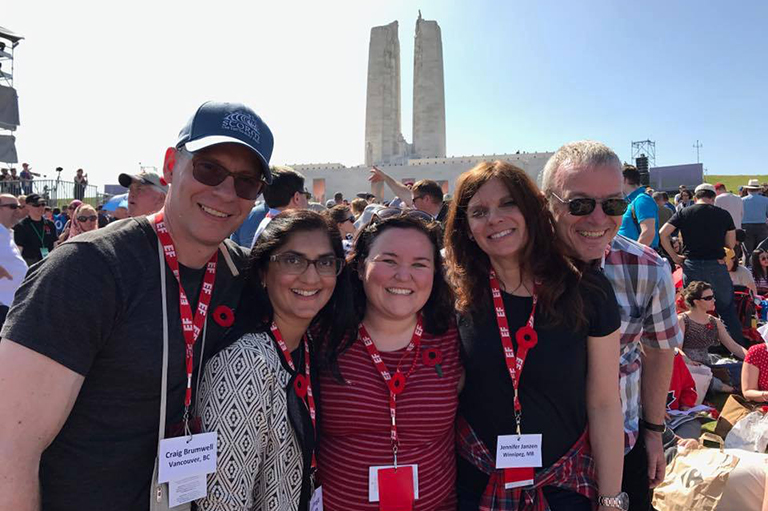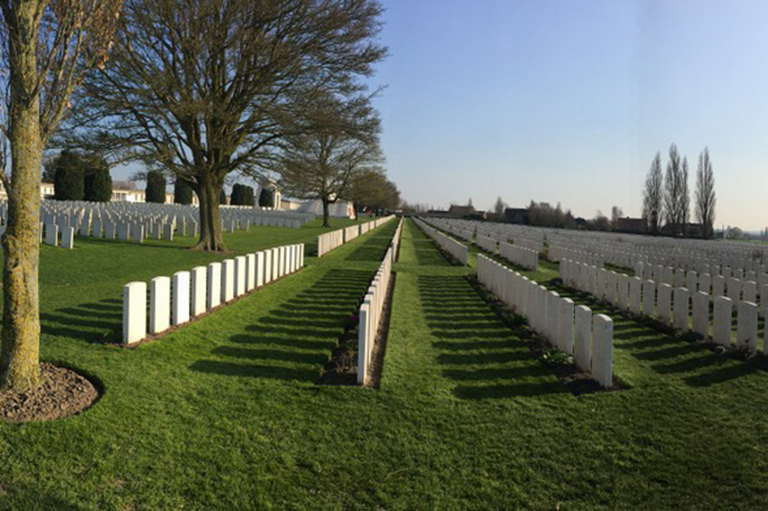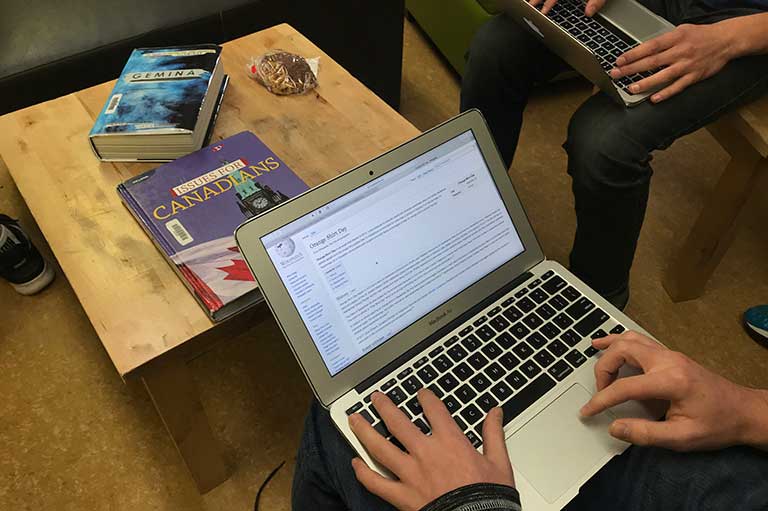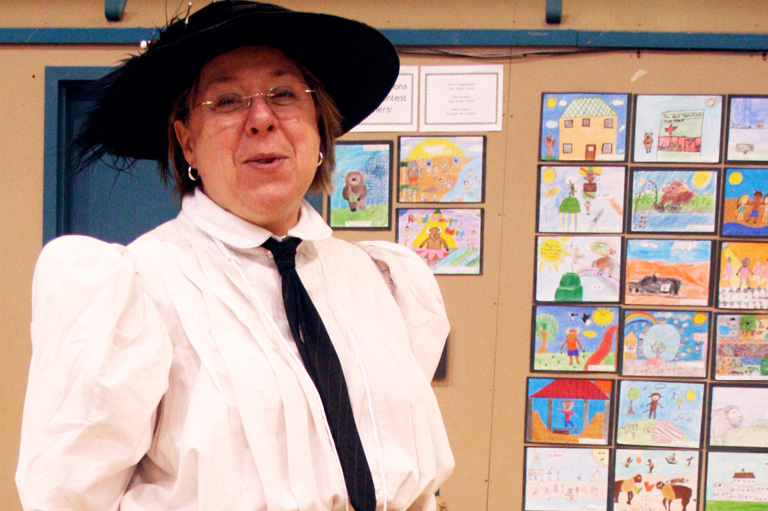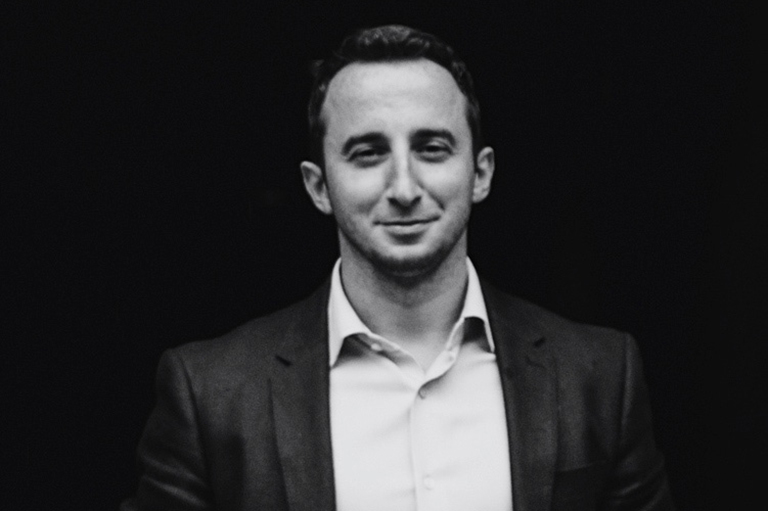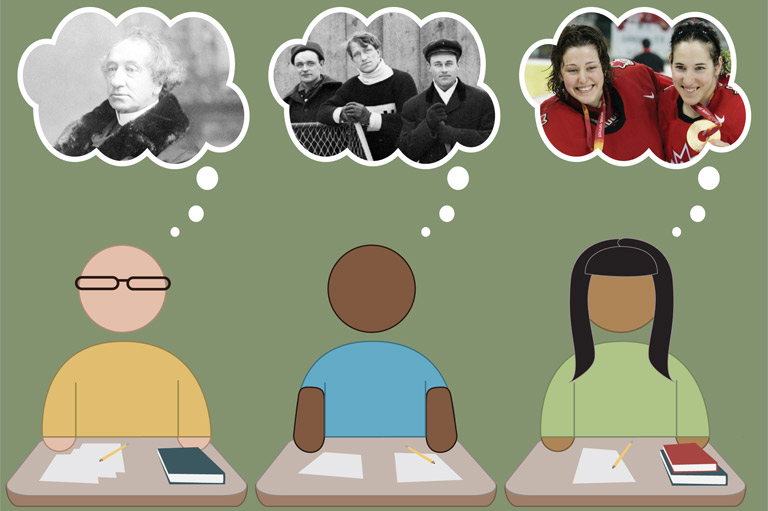Remembering a Canadian Battlefield Tour
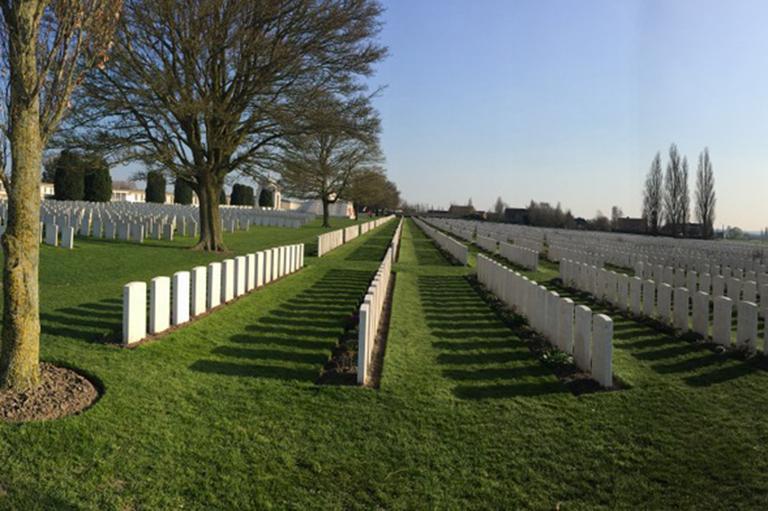
In spring 2017, twenty-four students and four staff from St. Paul's High School, Winnipeg, Manitoba travelled to France and Belgium for ten days visiting many First and Second World War memorials and museums. Here are some reflections from Hunter Waytt, a grade 11 student.
- In Spring of 2016, a trip to France, Belgium, and Normandy was presented to the student body and initially I was very interested in the idea of travelling to see these historic monuments. Personally, I am proud to be a Canadian, and felt it was important to gain an understanding of just what happened during the First and Second World Wars. To actually be at the locations where some of these events occurred is completely different than learning it in a book. I wanted to go to gain a proper understanding of these locations, and feel history come alive. Another primary reason that I wanted to go to France was to practice and see how well I could speak French. I am a student in the Advanced French 11 program at St. Paul’s, and in general I was curious how much of the dialogue, verbs, and phrases we learnt in class was used daily. In general, this trip seemed like an amazing opportunity, and immediately peaked my interests.
- 24 hours away from the flight, I remember being quite calm. The slightest feelings of being anxious and nervous were there, but in general, I was not too worried. The main source of any anxiety came from the long flight that was to come. Mostly though I tremendously excited to spend time at many great historical sites; such as Vimy Ridge, Juno Beach, the Eiffel Tower, the Palace of Versailles, etc.
- We arrived in Paris on March 24th and visited many places in and around Paris for two days. We left Paris on Sunday, March 26th and my memories of this day pivot primarily around the tall, white, marble memorial statue at the highest point of Vimy Ridge. Looking back on the visit of the statue, I remember feeling a few different emotions. The first, and the strongest emotion is pride. If anything, this monument is the one that will make any Canadian feel both grateful and proud to have had people fight for our freedom, as well as pride for our country, our nation, coming together to take this ridge. To me, the statue also physically represented these virtues. The monument was impeccably white and well kept, just adding to the feeling of a place to be proud of Canadian heritage. In addition to the visit to the actual monument of Vimy, we managed to get a good look at the land where war was fought on with bombs, and mines shaping the land. This had a huge effect on me, as it showed me just how long war can really last, and the impacts/after effects that come from a war on the global scale. The land literally has massive craters in it, from land mines, and smaller craters from bombs that make the whole place extremely hilly, but what is truly astounding is seeing the grass and trees regrow after such horrible fighting has gone on in a place like this. I remember being astounded by the beauty of the trees and grass in Vimy, and again, contributing to this feeling of Canadian pride, the whole Vimy experience is humbling and astounding, while inciting a feeling of pride.
- Monday, March 27th was the first day where I honestly had no idea what was going to be happening that day. From this day, two locations stick out the most in my mind, for different reasons. The visit to the St. Julien memorial site was very similar to the visit to Vimy Ridge. Seeing rows and rows of graves of Commonwealth soldiers was truly astounding, humbling, and incited true pride and gratefulness that I am a Canadian. This site however, really gave us a connection to the soldiers individually. I had bought a small cross with a poppy on it, to place on the grave of a fallen soldier, and this brought me a feeling that is truly hard to explain. Placing a cross on his grave made everything almost melt away for me. For a moment, it was just about paying respect to this unknown Canadian soldier of the Great War, rest in peace. Having paid our respects to the fallen soldiers, we travelled back to Ypres, to visit the Passchendaele Canadian Memorial Park, where we managed to see the trenches and bunkers preserved from the war. While this was far less touching than the St. Julien memorial site, it was really fascinating to get a real life look at the trenches, bunkers, and weapons that were used during the battle of Passchendaele, and gave us an even better insight to the horrors that transpired here.
- Tuesday, March 28th, our group visited Dieppe. What I really enjoyed in Dieppe was walking down the stony beach in our free time. The beaches in Belgium are not like the ones here in Canada. In Dieppe, this beach was composed of very large stones, rather than sand, and even large pieces of rock that acted very similarly to chalk. I have very fond memories of walking down the beach with my friends, basking in the sun of Dieppe, and finally having a slow day on our trip, to just enjoy the scenery.
- Wednesday, March 29th, we got to see some extremely interesting and astounding battery weapons at Longues-ser-Mer, France before heading off to another beach, Juno Beach. Juno Beach was another highlight for me on the trip. I enjoyed two main things about Juno beach. First, I really admired the actual beach at Juno Beach. Much like how the Vimy Ridge memorial grounds had regrown with grass and trees, I found the sand and water at Juno to be extremely nice, and I could have honestly mistaken the beach for a tropical resort had I not known the history behind it. On a more serious note, Juno Beach, and the history behind the ingenuity of D-Day again, made me feel proud to be a Canadian. The story of making a man-made port in Arromanches, France is amazing, and visiting it in person truly shows the history of this great battle.
- As a final remark to the trip, I would like to say Lest We Forget the soldiers who fought for Canada during both the First and Second World Wars, and Lest We Forget the amazing history we learnt on this trip exploring Europe.
Themes associated with this article
Advertisement

